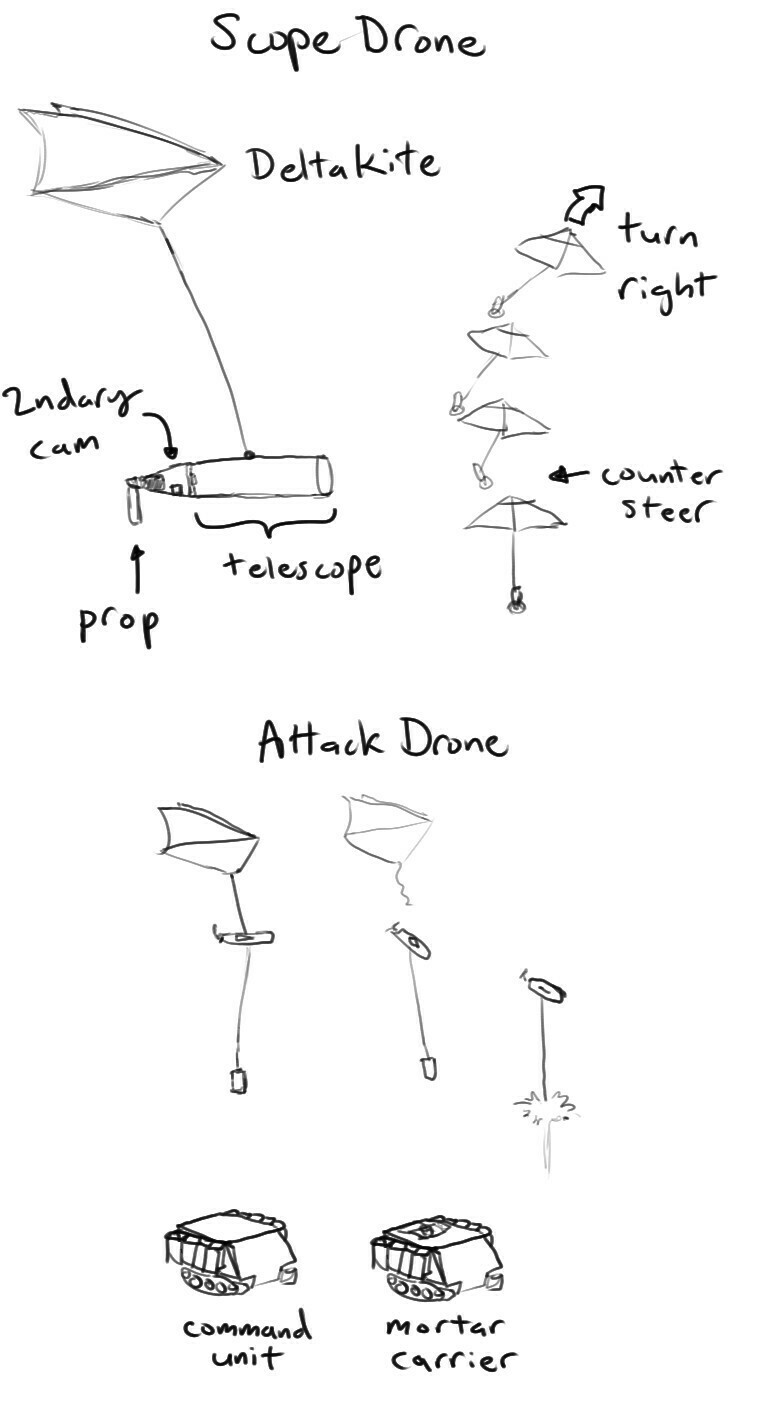
"Eyes and Knives" Drone and Mortar Carrier
I have criticized the loitering munition concept as costing too much per shot and for not providing feedback after an attack.
Well, here's my proposed alternative, with low cost per shot, and which keeps your eyes in the sky so you can immediately assess attack success/failure (and immediately attack again if necessary).
It's like low cost close air support. It separates roles between "eyes" - cheap UAV telescopes - and "knives" - a mortar for mostly non-moving targets, and reusable dive bomber drones for moving targets.
The "eyes" survive by flying too high for enemy guns to be effective, and being less expensive than missiles. It's little more than a telescope hanging from a cheap kite. A single bladed prop provides both propulsion and steering (including pointing the telescope). The prop blade alternates between spinning for thrust, and staying still for steering. During the daytime or over mountainous terrain, these drones can soar for long endurance.
The "knives" have a more powerful motor and battery instead of a telescope. They carry a cheap shaped charge warhead on a line. The attack drone initially climbs relatively slowly. When a target is determined, it releases the kite and dives at the target. It detonates the warhead above the target and then flies itself back to recharge and rearm.
The "knives" have no sensors other than GPS to minimize cost.
The kites can be reused, if they are recovered, but they're also cheap enough to be disposable. The point is to reuse the expensive sensor and guidance units rather than blow them up (like a missile or loitering munition).
The support vehicles are command units and mortar carriers. The drone operators sit in command units, while mortar carriers are simply devoted to shooting mortars at the relayed target coordinates. Both types have drone ammo boxes lining their skirts, and recharging stations for the drones. Note that an M113 amphibious tracked vehicle is orders of magnitude less expensive than an attack aircraft, and this system has basically limitless endurance compared to a traditional aircraft. The drones can take turns flying overhead practically forever, whereas traditional close air support coverage is transient.
These drones use battery electric propulsion to keep overall costs low. Aero engines are more expensive and finicky to maintain, and might not last as long. Batteries limit range and endurance compared to aero engines, so this system is not capable of deep long range strikes. Thus, the system is not a replacement for longer range aircraft, drones, and cruise missiles.